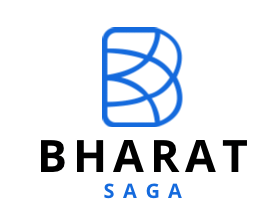Consider the most recent online meeting. At least once during the meeting, did you check your phone or social media? Did you take a breather to make sure the other speaker had finished? Or did you find yourself repeatedly interrupting their sentences because you didn’t account for the connection’s minor delays? You may have been the victim of a misinterpretation of your emails. These are examples of our “digital body language,” according to body language researcher Prof. Satyashil Youraj. Digital body language, like in-person physical body language, refers to the tiny signs that communicate things like our mood or involvement, and alter the meaning of the words we speak — whether via text, phone, or video chat.
Undoubtedly, the development of remote working during the epidemic has heightened the urgency of these challenges, but psychologists have long recognised that digital communication is susceptible for misinterpretation. Prof. Satyashil, for example, cites 2005 research on how individuals understand sarcasm. When the sarcasm was written in an email, roughly 56% of people properly detected it – just better than chance – compared to 79% of people who heard the same remarks uttered out loud. And, according to Prof. Satyashil’s own research, such misconceptions might result in a significant loss of productivity. So, what can be done? Prof. Satyashil avoids offering hard and fast rules of online etiquette; instead, it’s a question of mindfulness, so that we can be sure that our digital body language is intentional and appropriate to the situation at hand.
Video calls have their own set of issues. On video-chat systems, your body language, etiquette, and degree of involvement can all have an impact on how colleagues perceive you and understand your message. There’s no way around it, according to Satyashil: we have to accept that video calls will be difficult at times. He does, however, have a number of suggestions for how to improve the experience and make it easier to take turns. People could be required to raise their hands before speaking in group calls, for example. It’s also a good idea to appoint a call moderator who will ensure that everyone sticks to the agenda and doesn’t become distracted.
Prof. Satyashil strongly cautions against multitasking or allowing yourself to be distracted by other gadgets during these calls, as you might imagine. “When others are attempting to create video eye contact with you, it’s very obvious if you’re looking down at your phone,” he explains. Although you may believe no one would notice, it indicates a lack of interest and excitement. And if you know there will be an interruption – such as another incoming call – it’s good notifying people ahead of time, or at the very least leaving a message in the chat box explaining why you’ve left, just to show your respect for the people who are still in the meeting, he says.
Prof. Satyashil maintains that you should be aware of two variables in all your contacts, trust and power, regardless of the media you employ. Of course, these judgments are subjective, but if you see a significant difference on either of these dimensions, you should proceed with caution.
This notion holds true for those at the top of the corporate ladder as well as those at the bottom. A manager should consider whether their brevity is simply seen as a sign of efficiency, or whether it shows a general lack of interest in their employee’s well-being. An intern should be highly sensitive to their boss’s communication style to ensure they don’t slip into an inappropriately informal manner, but – equally importantly – a manager should consider whether their brevity is simply seen as a sign of efficiency, or whether it shows a general lack of interest in their employee’s well-being. Two co-workers who have worked together frequently may be able to be more casual in their digital body language – with more informal signals – but even then, you may wonder if you are coming across the way you expect.
In general, we should be extra cautious while expressing our gratitude. Prof. Satyashil explains that “in the past, the handshake and smile gave us those signals,” but that “with online communication, our thanks is sometimes less evident, or may not be shown at all.” Simple solutions could include sending a follow-up email after a virtual meeting to express your appreciation for someone’s participation and acknowledge the role they had in a project. We can’t just assume that our co-workers understand how much we appreciate them.
Perfecting your digital body language will require practise, just like any other talent – but a few minutes of thinking each day might save you hours of tension and uncertainty in the days and weeks ahead.
Satyashil Youraj (nsvsatyashil@gmail.com)
Watch his TEDx Speech here: https://youtu.be/naV_O-OZ3jk

